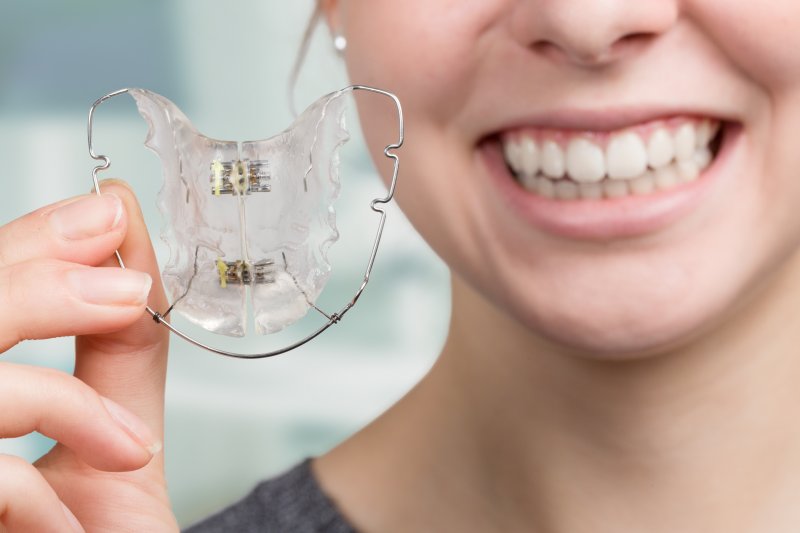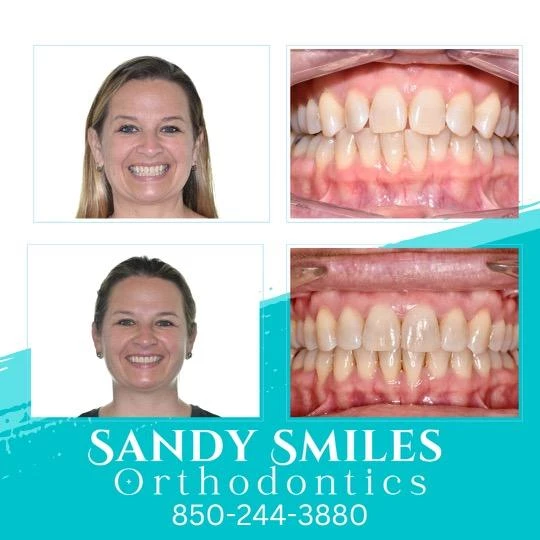The Ultimate Contrast: Invisalign vs. Traditional Braces for Adults
The Ultimate Contrast: Invisalign vs. Traditional Braces for Adults
Blog Article
Invisalign vs. Conventional Dental braces: Which Alternative Is Right for You?
When considering orthodontic therapy, the selection between Invisalign and conventional braces offers a number of important variables that merit mindful evaluation. Invisalign uses a very discreet alternative with removable aligners, while typical braces supply an extra noticeable yet effective solution for serious imbalance. Each choice incorporates distinct benefits and drawbacks associated with aesthetic appeals, convenience, treatment duration, and cost. Recognizing these nuances is important for making an informed decision that straightens with your personal preferences and way of life. The question continues to be: which alternative will finest meet your orthodontic needs and expectations?
Summary of Therapy Alternatives

In comparison, standard braces include metal brackets and cords that are adhered to the teeth. This technique uses constant stress gradually to achieve alignment. While efficient for complicated orthodontic issues, standard dental braces require regular gos to for changes and can pose obstacles in keeping dental health as a result of the difficulty of cleaning about cables and brackets.
Both choices have their qualities, and the option typically pivots on details oral conditions, way of life preferences, and person compliance. Eventually, getting in touch with an orthodontic specialist is important for identifying the most ideal treatment plan tailored to specific needs. Recognizing the subtleties of each alternative can substantially affect the total success of orthodontic treatment.
Visual Factors To Consider
A substantial element affecting the option between Invisalign and typical dental braces is the aesthetic allure each treatment provides. Invisalign aligners are crafted from clear plastic, making them essentially invisible when put on. This very discreet look is especially appealing to adults and young adults who might really feel uneasy regarding their orthodontic treatment. The capacity to keep an all-natural smile throughout the alignment procedure can significantly enhance the individual's self-confidence in professional and social settings.
In contrast, conventional dental braces are composed of steel brackets and wires, which can be more noticeable. While developments in orthodontic modern technology have resulted in the development of smaller braces and tinted elastics, conventional braces still keep a more conspicuous profile. For some individuals, the visibility of braces may deter them from looking for essential therapy.
Inevitably, the choice between Invisalign and conventional dental braces may pivot on personal choices pertaining to visual appeals. Patients that prioritize discretion typically lean toward Invisalign, while those that are much less concerned concerning presence might decide for conventional braces. Understanding the aesthetic implications of each option is essential for making an educated choice that lines up with one's way of life and choices.
Comfort and Convenience

In regards to comfort, Invisalign aligners are detachable, making it possible for people to enjoy their favored foods without constraint and maintain optimal oral hygiene. Cleaning and flossing are streamlined, as the aligners can be secured throughout these regimens, whereas typical braces need cautious navigating around cords and braces.
In comparison, standard braces necessitate routine adjustments, making them much less hassle-free for those with busy timetables. On the whole, the convenience and convenience of Invisalign make it an appealing option for many people seeking orthodontic treatment.
Therapy Period and Performance
While both Invisalign and conventional braces work in dealing with dental misalignments, the period of therapy can vary substantially in between both choices. Generally, Invisalign therapy can take anywhere from 12 to 18 months, depending on the complexity of the situation. The clear aligners function by progressively moving teeth right into their wanted positions, and regular follow-ups with an orthodontist assistance make sure development stays on track.
On the other hand, conventional braces frequently require a longer commitment, normally varying from 18 months to 3 years. This results from their fixed nature blog and using cables and braces, which can be much more efficient for extreme imbalances and complex cases (Invisalign). The treatment effectiveness of typical braces is well-documented, as they permit for accurate adjustments and better control over tooth movement
Ultimately, the option in between Invisalign and conventional braces may hinge on both the anticipated treatment duration and the details dental problems available. Consulting with an orthodontist is crucial, as they can give customized recommendations based on specific needs, making sure the selected method lines up with wanted outcomes and durations.
Expense Comparison and Insurance Options
Expense plays a considerable function in the decision-making procedure for individuals taking into consideration orthodontic therapy, whether choosing for Invisalign or conventional braces. Generally, the cost of Invisalign varieties from $3,000 to $8,000, while standard braces usually cost in between $2,000 and $6,000. Factors affecting these costs include the intricacy of the case, the duration of treatment, and geographical area.
Insurance protection can dramatically influence out-of-pocket expenditures. Lots of oral insurance policy strategies provide partial insurance coverage for orthodontic therapies, however the specifics can differ extensively. It is important for people to examine their insurance plan to identify the degree of coverage for either option. Generally, traditional dental braces might be much more frequently covered by insurance strategies compared to Invisalign, which some insurance providers categorize as a cosmetic procedure.
Furthermore, several orthodontic techniques provide versatile repayment strategies, making both therapy options more available. Individuals need to make inquiries concerning possible financing choices and discounts for ahead of time payments. Examining the overall description cost, consisting of insurance benefits find more info and payment strategies, is necessary for making an educated choice that straightens with both aesthetic choices and budget plan considerations.

Final Thought
In summary, the option between Invisalign and standard dental braces depends upon several elements, consisting of visual choices, comfort, therapy period, and expense. Invisalign supplies a discreet, removable alternative that promotes dental hygiene and dietary flexibility, while traditional dental braces may be better for complex oral problems and often come at a lower price point. Eventually, examination with an orthodontist is necessary to assess individual scenarios and establish the most proper therapy option for accomplishing optimum oral placement.
When considering orthodontic treatment, the option between Invisalign and conventional dental braces presents a number of important variables that merit cautious assessment.Comparing Invisalign and typical dental braces exposes distinctive treatment options for orthodontic modification.While both Invisalign and standard braces are effective in correcting oral imbalances, the duration of therapy can vary considerably in between the 2 options.Price plays a significant role in the decision-making process for people considering orthodontic treatment, whether deciding for Invisalign or typical dental braces.In summary, the choice in between Invisalign and traditional braces hinges on multiple elements, including visual preferences, comfort, therapy period, and cost.
Report this page